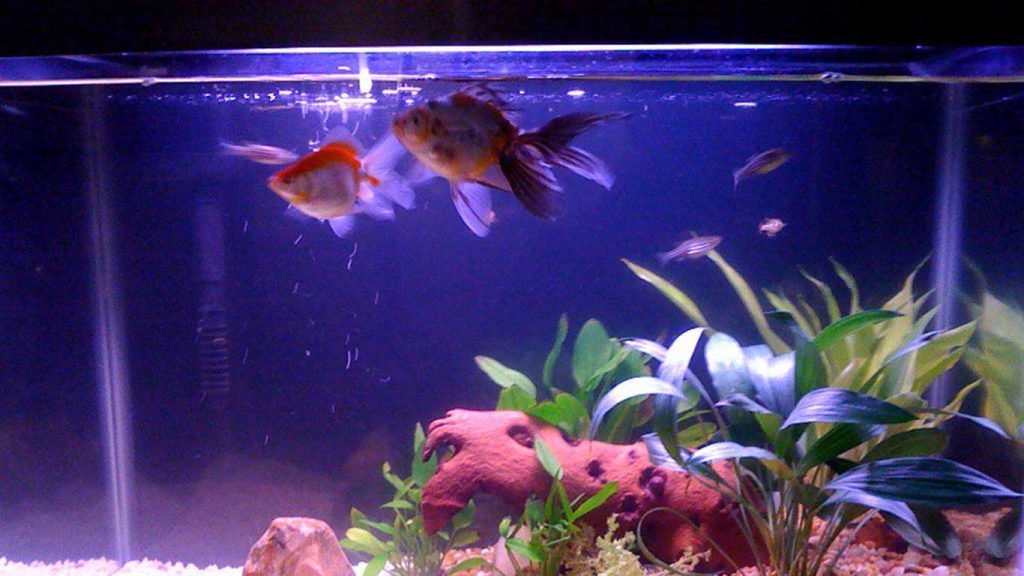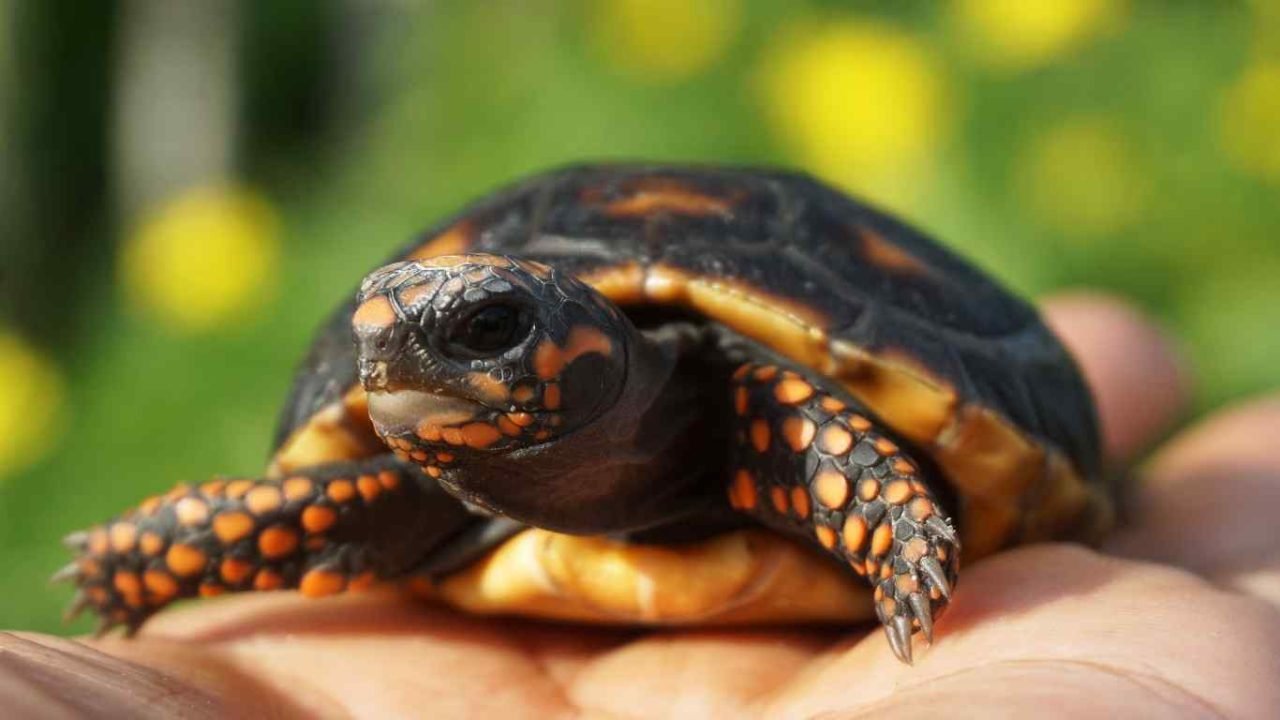Are you considering housing Corydoras catfish with your goldfish? You may be wondering if these two species can live together peacefully in the same tank. The answer is yes, under certain conditions.
While goldfish can pose a threat to smaller Corydoras species by potentially swallowing them, larger Corydoras can actually be compatible tank mates with goldfish. It’s important to choose Corydoras that are at least 2.5 inches in size to prevent them from being preyed upon by the goldfish.
Moreover to size considerations, Corydoras are known for their peaceful nature, which makes them unlikely to harm other fish in the tank. They can coexist peacefully with goldfish if the right conditions are met.
Can Corydoras Live with Goldfish? Core Insights:

Factors to Consider for Keeping Corydoras with Goldfish
When considering keeping Corydoras with goldfish, several factors need to be taken into account. First, tank size is important, as both goldfish and Corydoras require a significant amount of space.
Goldfish typically need a tank of at least 40 gallons, providing them with ample swimming room and space to grow. Corydoras, on the other hand, are best kept in groups and require a minimum tank size of 20 gallons to accommodate their social nature and provide enough hiding spots for them to feel secure. If larger Corydoras species are chosen, a tank size of 30-40 gallons may be more suitable.
Aside from tank size, it is crucial to consider water temperature requirements. Goldfish are coldwater fish and thrive in temperatures ranging from 50-70°F, while Corydoras are tropical fish and prefer warmer temperatures between 72-82°F. It is important to strike a balance and select Corydoras species that can tolerate the lower temperature range preferred by goldfish, ensuring the comfort and well-being of both species.
Filtration and regular water changes are essential for maintaining optimal water quality. Goldfish produce a substantial amount of waste, so a powerful filtration system capable of handling their biological load is necessary. Additionally, regular water changes help prevent the accumulation of harmful substances and ensure a healthy environment for both goldfish and Corydoras.
Diet is another factor to consider when keeping Corydoras with goldfish. Goldfish are primarily herbivorous and require a diet consisting of high-quality pellets, flakes, and fresh vegetables. Corydoras, on the other hand, are omnivorous and thrive on a diet that includes sinking pellets, live or frozen foods, and occasional vegetable matter. Providing a varied and balanced diet is essential to meet the nutritional needs of both species.
Lastly, substrate preferences should be taken into account. Goldfish are known to dig and uproot plants, so a substrate with larger grains or no substrate at all is recommended to prevent them from swallowing it. On the other hand, Corydoras have a preference for fine substrates like sand, which allow them to sift through and search for food. Providing a suitable substrate that meets the needs of both species can help create a harmonious living environment.
| Factors to Consider | Goldfish | Corydoras |
|---|---|---|
| Tank Size | At least 40 gallons | Minimum 20 gallons (30-40 gallons for larger species) |
| Water Temperature | 50-70°F | 72-82°F (choose species compatible with goldfish temperature range) |
| Filtration | Powerful filtration system to handle goldfish waste | Necessary for maintaining optimal water quality |
| Water Changes | Regular water changes to prevent harmful substances | Required for maintaining a healthy environment |
| Diet | High-quality pellets, flakes, vegetables | Sinking pellets, live or frozen foods, occasional vegetables |
| Substrate Preferences | Larger grains or no substrate | Sand or fine substrate |
Compatible Corydoras Species for Goldfish Tanks
When it comes to selecting the right Corydoras species to coexist with your goldfish, size matters. It’s crucial to choose larger species that are more than 2.5 inches in size to ensure they won’t become dinner for your goldfish. To avoid any mishaps, it’s best to avoid smaller Corydoras species, such as panda cory catfish and pygmy cory catfish, which can easily be swallowed by goldfish.

If you’re looking for suitable Corydoras species to be tank mates with your goldfish, consider the following options:
- Scleromystax barbatus
- Corydoras sterbai
- Brochis Multiradiatus
These larger Corydoras species have been found to successfully coexist with goldfish. Their size makes them less likely to be preyed upon by goldfish, ensuring a harmonious tank environment.
Having a well-matched combination of fish in your tank is essential for their overall well-being. By choosing compatible Corydoras species, you can create a beautiful and balanced aquatic habitat for both goldfish and Corydoras.
Water Parameters and Care Considerations for Corydoras and Goldfish
While goldfish and Corydoras have different water parameter preferences, it is possible to create a suitable environment that meets the needs of both species. Understanding the specific care considerations and compatibility of water parameters is essential for maintaining a healthy and thriving tank.

Temperature Requirements
Goldfish prefer cooler temperatures ranging from 50-70°F (10-21°C), while some Corydoras species can tolerate lower temperatures on the tropical scale. To ensure compatibility, it is important to choose Corydoras species that can thrive in the lower temperature range preferred by goldfish.
pH Requirements
Corydoras catfish generally prefer slightly acidic to neutral pH levels, ranging from 6.5 to 7.5. Goldfish, on the other hand, can tolerate a wider pH range between 6.0 and 8.0. It is important to maintain stable pH levels within this range to prevent stress and promote overall well-being for both species.

Test Freshwater Aquarium Water pH Test Kit
Water Hardness
Corydoras catfish thrive in soft to moderately hard water with a range of 2 to 15 dGH (degree of General Hardness). Goldfish are more adaptable and can tolerate a wider range of water hardness from 5 to 20 dGH. It is recommended to keep the water hardness within the acceptable range for both species to ensure optimal health.
Compatibility of Water Parameters
Creating a compatible environment for both goldfish and Corydoras requires careful consideration of water parameters. Here are key points to keep in mind:
- Ensure that the temperature remains within the suitable range for both species. Use a heater or chiller if necessary.
- Monitor and maintain stable pH levels within the recommended range.
- Regularly test the water hardness to ensure it falls within acceptable levels for both species.
By closely monitoring and adjusting the water parameters and providing a suitable environment, you can promote the well-being and compatibility of both goldfish and Corydoras in the tank. Regular water testing and observation of fish behavior will help you make any necessary adjustments to ensure a harmonious aquatic community.

Feeding and Compatibility in the Tank
Feeding goldfish and Corydoras in the same tank requires careful consideration of their different dietary needs. While goldfish primarily thrive on plant-based, fiber-rich foods, it is essential to provide a balanced diet to prevent constipation. Supplementing their diet with protein-based foods or insects can also provide added nutrition for goldfish. However, it is crucial to ensure that the food is appropriate for both species to maintain their overall health and compatibility.
Goldfish primarily eat plant-based, fiber-rich foods.
For goldfish: Choose high-quality goldfish flakes or pellets that contain a mix of plant matter and essential nutrients. These commercially available fish foods are specifically formulated to meet the dietary requirements of goldfish. Additionally, you can provide fresh or blanched vegetables such as peas, lettuce, and spinach as occasional treats. These veggies are not only nutritious but also help satisfy their natural foraging behavior.

Nutritionally Balanced Flakes For Goldfish
Supplement their diet with protein-based foods or insects.
Protein-based foods: Offer occasional treats of freeze-dried or frozen brine shrimp, bloodworms, or daphnia to provide extra protein to your goldfish. These protein-rich foods can help enhance their diet and support healthy growth.
Insects: Some goldfish enjoy snacking on live or frozen insects like mosquito larvae, small earthworms, or small crustaceans. These live foods can provide natural enrichment and mental stimulation for your goldfish, as well as add variety to their diet.
When feeding both goldfish and Corydoras in the tank, it is important to ensure that the food is suitable for both species. Pay attention to the feeding behavior and preferences of each fish to determine the ideal feeding routine. Providing sinking pellets or bottom feeder tablets specifically designed for Corydoras can ensure they receive their required nutrition without interfering with the goldfish’s feeding habits. Observing their eating patterns and adjusting the amount of food accordingly will help maintain a harmonious and compatible tank environment.

Join Our GeoZoo Family
Subscribe to our Newsletter
Final Remarks
In the end, it is possible to keep Corydoras catfish with goldfish in the same tank, but there are important factors to consider for successful cohabitation. When choosing Corydoras species, opt for larger ones that are at least 2.5 inches in size to prevent them from being swallowed by goldfish. Ensure that the tank size is appropriate, with a minimum of 20 gallons for Corydoras and at least 40 gallons for goldfish. It is crucial to maintain suitable water parameters, taking into account both the temperature requirements of goldfish (ranging from 50-70°F) and the specific needs of the chosen Corydoras species.
Feeding is another important consideration. While goldfish primarily eat plant-based foods, their diet can be supplemented with protein-based options. It is imperative to provide a balanced diet for goldfish to prevent constipation. As for compatibility, Corydoras are generally peaceful and can coexist with goldfish, making them suitable tank mates. However, it is always essential to monitor their behavior and make adjustments as necessary to ensure the well-being and happiness of both species.
By following these guidelines and giving careful attention to the needs of both Corydoras and goldfish, you can create a harmonious tank environment where they can thrive together. Remember to prioritize the health and welfare of the fish, providing them with appropriate tank conditions, nutrition, and a peaceful atmosphere. With proper care, you can enjoy the beauty and diversity of both Corydoras catfish and goldfish in the same aquarium.
FAQ
Can Corydoras live with goldfish?
Yes, it is possible to keep Corydoras catfish with goldfish, but there are certain considerations to keep in mind.
What factors should be considered for keeping Corydoras with goldfish?
Factors to consider include tank size, water temperature requirements, filtration and water changes, diet, and substrate preferences.
What are the suitable Corydoras species for goldfish tank mates?
Larger Corydoras species such as Scleromystax barbatus, Corydoras sterbai, and Brochis Multiradiatus are recommended for cohabitation with goldfish.
What are the water parameters and care considerations for Corydoras and goldfish?
It is important to monitor and adjust water parameters such as temperature and pH to meet the needs of both species. Care considerations include proper filtration and regular water changes.
What should I feed goldfish and Corydoras in the same tank?
Goldfish primarily eat plant-based, fiber-rich foods, while Corydoras can be fed a diet of sinking pellets or frozen foods designed for catfish.

